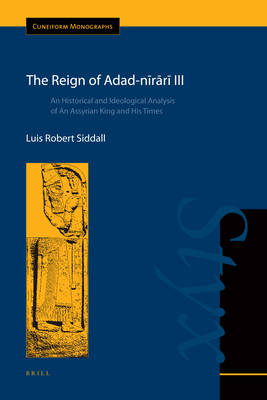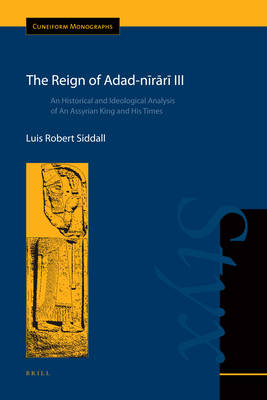
- Afhalen na 1 uur in een winkel met voorraad
- Gratis thuislevering in België vanaf € 30
- Ruim aanbod met 7 miljoen producten
- Afhalen na 1 uur in een winkel met voorraad
- Gratis thuislevering in België vanaf € 30
- Ruim aanbod met 7 miljoen producten
Zoeken
The Reign of Adad-Nīrārī III
An Historical and Ideological Analysis of an Assyrian King and His Times
Luis Robert Siddall
€ 230,45
+ 460 punten
Omschrijving
In The Reign of Adad-nīrārī III, Luis Siddall examines the evidence and edits new inscriptions from the king's reign to investigate the chronology, campaigns, imperial administration and royal ideology of the period. While historians have typically viewed this period as one of turmoil, imperial recession, political weakness and decentralisation, Siddall shows that Adad-nīrārī's reign marked a period of imperial stability, chiefly through changes to the administration. However, while politically successful, the imperial policy affected the king's ideological expression, particularly in terms of the description of the campaigns in Adad-nīrārī's inscriptions and his limited use of royal titles.
"Scholars working on the Neo-Assyrian period cannot afford to miss Siddall's fresh assessment of the evidence for Adad-nirari's reign. He offers a re-evaluation of several texts but perhaps more importantly, he proposes a few methodological innovations that shed new light on the history of Assyria in the 9th century." Bill T. Arnold (Asbury Theological Seminary)
"Scholars working on the Neo-Assyrian period cannot afford to miss Siddall's fresh assessment of the evidence for Adad-nirari's reign. He offers a re-evaluation of several texts but perhaps more importantly, he proposes a few methodological innovations that shed new light on the history of Assyria in the 9th century." Bill T. Arnold (Asbury Theological Seminary)
Specificaties
Betrokkenen
- Auteur(s):
- Uitgeverij:
Inhoud
- Aantal bladzijden:
- 260
- Taal:
- Engels
- Reeks:
- Reeksnummer:
- nr. 45
Eigenschappen
- Productcode (EAN):
- 9789004256132
- Verschijningsdatum:
- 11/07/2013
- Uitvoering:
- Hardcover
- Formaat:
- Genaaid
- Afmetingen:
- 160 mm x 239 mm
- Gewicht:
- 544 g

Alleen bij Standaard Boekhandel
+ 460 punten op je klantenkaart van Standaard Boekhandel
Beoordelingen
We publiceren alleen reviews die voldoen aan de voorwaarden voor reviews. Bekijk onze voorwaarden voor reviews.











